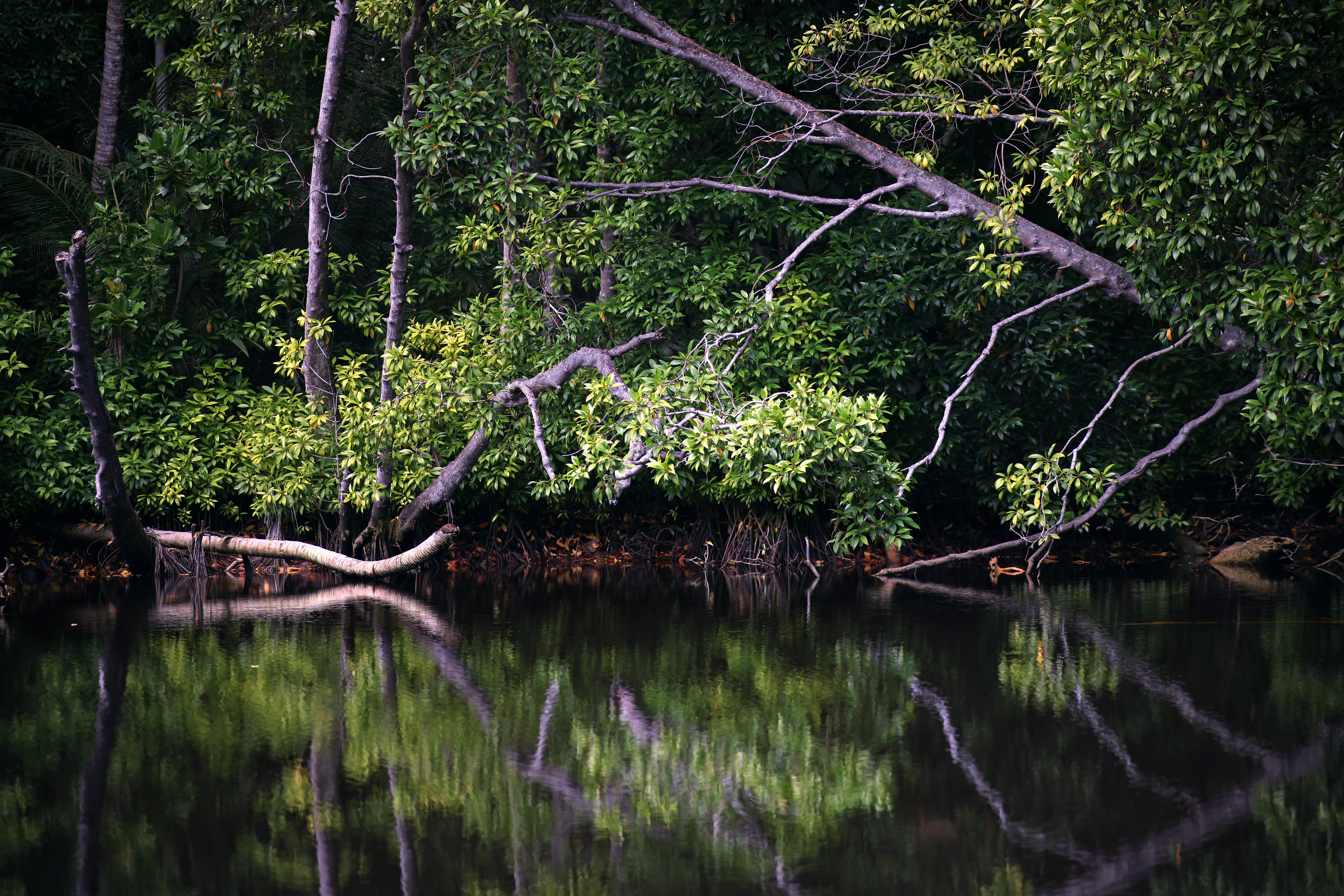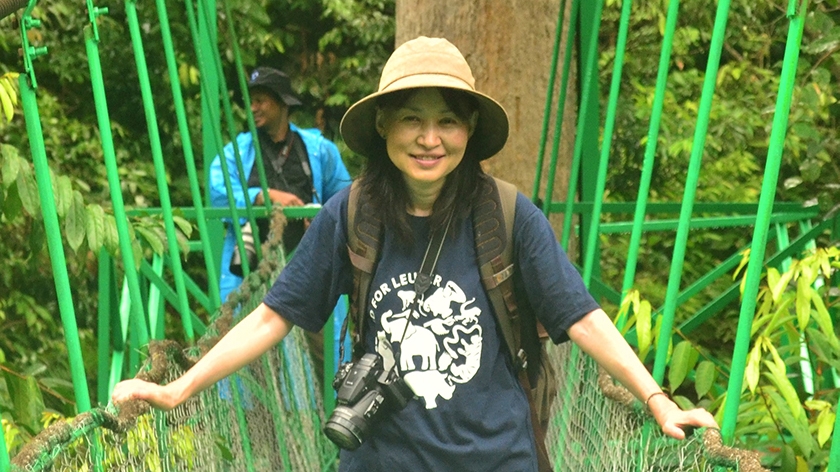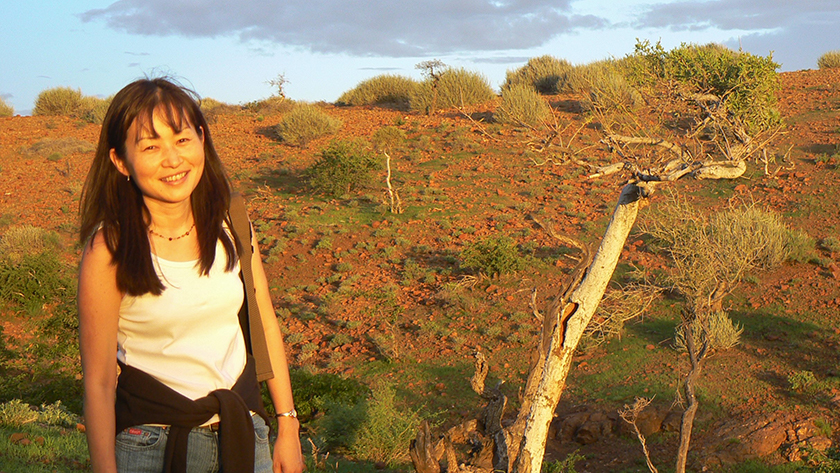Six questions for UNDP's Midori Paxton.
Placing nature at the heart of economic and development thinking
April 19, 2022

Every year, the world spends US$700 billion less than what is needed to reverse biodiversity loss.
Midori Paxton leads UNDP’s efforts to protect biodiversity and ecosystems. A former journalist and author, she shares her motivations for working to place nature at the heart of economic and development planning and decision making, and to shift funding flows toward activities that help the environment rather than harm it.
How did you get into this line of work?
I grew up in Yokohama City, Japan, where as a child I roamed forests and paddy fields looking for frogs and tadpoles, crayfish, loaches, rhino beetles, stag beetles, and butterflies. Nature has always given me so much joy and insight. I always knew I would want to contribute to environmental causes, no matter what profession I pursued.
I started my career as a journalist for the Japan Times newspaper, focusing on environmental reporting. Then I worked as a United Nations Volunteer, as an information officer with the UN peacekeeping operation in Somalia, then as a UNHCR field officer at a refugee camp on the Rwanda-Tanzania border.
I went to Namibia in 2000 to be the Japanese government-financed Junior Professional Officer at UNDP, focused on environmental projects. That was when many of the first GEF-funded projects in biodiversity, climate change, and international waters focal areas were being developed.
I worked for the Ministry of Environment and Tourism as the project coordinator for the Strengthening the Protected Area Network (SPAN) project, which resulted in major changes to how the country’s wild spaces and species were protected and valued.
What do you most enjoy most?
I take a special joy from my work when I feel my ability to connect the dots across disciplines is helping to advance global conservation efforts. It has been especially rewarding to help place nature at the heart of economic and development thinking and planning. This shift is so important to safeguard biodiversity and ecosystem services we all benefit from – air, water, food, medicine, jobs, and more.
Is there a GEF-supported initiative that is close to your heart?
I must talk about my experience as project coordinator of the SPAN project in Namibia, reporting directly to the Director of Parks and Wildlife Management. I vividly remember the first general meeting we organized, with park heads and wildlife management officers gathering in Windhoek. They shared the issues they faced and their aspirations on issues including human-wildlife conflict; insufficient budget, equipment, training, and incentives; and a lack of enabling policies to support their conservation priorities. By the end of the project, Namibia’s national protected area expanded from 17 percent of its land surface to over 20 percent, with quadrupled financing from the government for the management of these protected areas. One catalyst for this change was the economic valuation studies which the project supported, which indicated that increase investment in national parks could yield an economic rate of return of up to 42 percent. You would invest your money if you could get such high interest!

Midori Paxton visiting the Gunung Leuser National Park in Indonesia for the GEF-financed Sumatra Tiger Project and the Lion’s Share project development.
What are you currently focused on?
Money – where it goes, and what it does. How it can be spent and invested wisely. Money can conserve or destroy nature.
Every year, the world spends US$700 billion less than what is needed to reverse biodiversity loss. My focus right now is on that biodiversity finance gap. UNDP’s Biodiversity Finance Initiative (BIOFIN) works with 41 countries to support national biodiversity finance plans that identify solutions including budget earmarking, ecological fiscal transfers, bond and debt instruments, and the redirection of negative public expenditure such as the vast majority of agricultural subsidies.
We are also a founding partner of the Taskforce on Nature-related Financial Disclosures (TNFD), which launched in June 2021 following an anchor investment from the GEF. TNFD comprises 34 members, spanning private financial institutions and corporates, working to develop a reporting framework to gauge and act on nature-related risks. In 2020, we also co-founded the Global Fund for Coral Reefs which is designed as a 10-year, US$625 million blended finance vehicle.
We are also working on a number of bond, debt, and insurance instruments to connect capital markets with biodiversity funding needs, such as the new Rhino Bond issued by the World Bank with GEF funding. We were involved in supporting the Rhino Bond framework through preparatory work from 2016-2020, and I was thrilled to see its issuance!

In northwest Namibia after a meeting in 2009 with local community representatives on establishing a new ‘’peoples park’’ connecting iconic Etosha National Park and Skeleton Coast Park.
Environmental issues are very often complicated and concerning. What gives you hope?
When I see marked shifts in societies in favour of nature, it gives me tremendous hope. I visited Costa Rica, a country with amazing biodiversity, three times in the last year. It won the inaugural Earthshot Prize in 2021 for dramatically reversing deforestation. After reaching a terrible low of 21 percent of forest cover it now boasts nearly 60 percent. When I first visited the country in 1992, I remember feeling dismayed to see so many trucks dwarfed by their loads of gigantic logs.
Now you will see what we saw – many diverse and high-quality nature-based tourism ventures. The GEF CEO and Chairperson Carlos Manuel Rodriguez told me that Santa Rosa National Park did not have any jaguars when it was established in 1972 but now it is estimated to be home to as many as 200! This gives me hope as it proves that systemic shifts in a country are possible while drastically reducing poverty and increasing wellbeing.
What changes do you hope to see in the world by the time you retire?
My retirement may coincide with 2030. In this decade, I would like to – or rather I must – see a major shift in our economies and societies. Because without that we will continue to lose nature and reach the tipping point for ecological collapse. This is a fundamental human security issue. By 2030, we need to have a world where nature has moved to the heart of global understanding of sustainable development, where it is protected and restored as a planetary safety net for humanity, safeguarding our food, water, livelihoods jobs, climate, our health, and our security, enabling people to rise out of poverty and inequality to enjoy more just and sustainable futures. To achieve this, we will need seismic shifts in global narratives, in economies, in production and consumption systems, and in people’s mindsets and behaviour.
Read the full interview on the Global Environment Facility website.

 Locations
Locations


